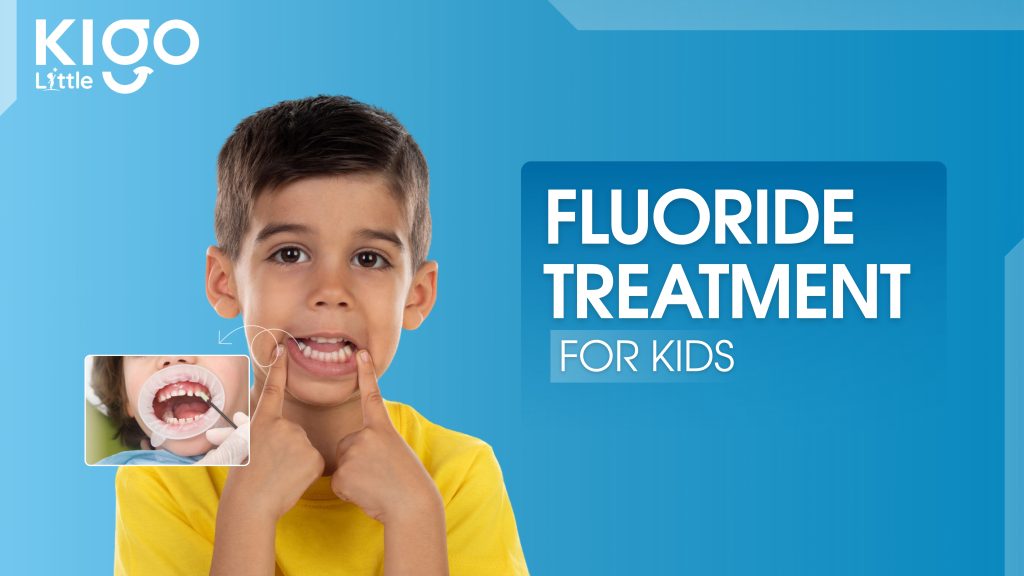As parents, we all want to protect our children from painful cavities and dental problems. Despite good brushing and flossing habits, kids are still vulnerable to tooth decay because their enamel is softer and more prone to bacterial attack. One of the most effective ways to strengthen those tiny teeth is through fluoride treatment for kids.
But many parents have questions: Is it safe? How often is it needed? Will it really help? Let’s break down everything you need to know about fluoride treatment so you can make the best decision for your child’s smile.

What is Fluoride and Why is it Important?
Fluoride is a natural mineral found in water, soil, and certain foods. It plays a crucial role in strengthening tooth enamel, making it more resistant to acid attacks caused by bacteria and sugary foods.
For kids, fluoride is extra important because:
- It protects new teeth as they grow in
- It repairs early signs of decay (remineralization)
- It reduces cavity risk during childhood, which lowers dental problems in adulthood
What is Fluoride Treatment for Kids?
Fluoride treatment is a professional dental procedure where concentrated fluoride is applied to your child’s teeth. This is different from the fluoride they get in toothpaste or drinking water.
At pediatric dental clinics, fluoride may be applied in the form of:
- Gel
- Foam
- Varnish (painted onto teeth with a small brush)
The process is quick, painless, and usually takes just a few minutes during a routine dental check-up.
Benefits of Fluoride Treatment for Kids
- Stronger Enamel: Builds a protective layer against bacteria
- Cavity Prevention: Reduces the risk of tooth decay by up to 40%
- Safe & Painless: No drilling, no needles—just a quick application
- Cost-Effective: Prevents expensive treatments like fillings or root canals later
- Supports Lifelong Oral Health: Kids who get fluoride early tend to have fewer dental issues as adults
When Should Kids Start Fluoride Treatments?
- As soon as teeth erupt: Even toddlers with their first baby teeth can benefit
- Every 3–6 months: Most dentists recommend treatments twice a year, sometimes more if your child is at high risk for cavities
- During the cavity-prone years (6–14): These are the years when permanent teeth are coming in and need maximum protection
Step-by-Step: What Happens During Treatment?
- The dentist cleans and dries your child’s teeth.
- Fluoride varnish, gel, or foam is applied using a brush, swab, or tray.
- Your child may be asked not to eat or drink for 30 minutes to allow the fluoride to set.
That’s it—no pain, no fuss, and only a few minutes in the chair.
Is Fluoride Treatment Safe for Kids?
Yes, when done by a dentist in the right dosage. Fluoride has been used in dentistry for decades and is backed by scientific research worldwide. The amount used in professional treatments is carefully measured to be both effective and safe.
At-Home Fluoride Care for Kids
Apart from professional treatments, parents can boost fluoride protection at home by:
- Using fluoride toothpaste (pea-sized amount after age 3)
- Supervising brushing twice daily
- Encouraging rinsing after snacks
- Limiting sugary foods and drinks
Fluoride treatment is one of the simplest, safest, and most effective ways to protect your child’s smile. It prevents cavities, strengthens teeth, and helps set the foundation for lifelong oral health. Combined with good brushing habits and regular dental check-ups, it’s the secret weapon against tooth decay.
At Kigo Little, we believe prevention is the best gift you can give your child’s smile. Our gentle, fun, and effective fluoride treatments keep cavities away while making dental visits stress-free. Call us today at 📞 +91 8333 999987 and give your child the strong, healthy teeth they deserve for a lifetime.
FAQs
Q: Is fluoride safe for toddlers?
A: Yes, fluoride varnish can be safely applied even to toddlers with their first teeth.
Q: How often should kids get fluoride treatment?
A: Every 3–6 months, depending on cavity risk and dentist’s advice.
Q: Can fluoride whiten my child’s teeth?
A: No, fluoride doesn’t whiten teeth. It strengthens enamel and prevents decay.
Q: Are there any side effects?
A: Professional fluoride treatments are safe. Rarely, mild white spots may appear if too much fluoride is ingested at home (fluorosis), which is why dentist guidance is important.
Q: Does insurance cover fluoride treatment?
A: Many dental insurance plans cover preventive treatments like fluoride, but check with your provider.
Q: Will my child still need fillings if they get fluoride treatments?
A: Fluoride reduces the risk of cavities but doesn’t guarantee zero cavities. Good oral hygiene is still essential.





